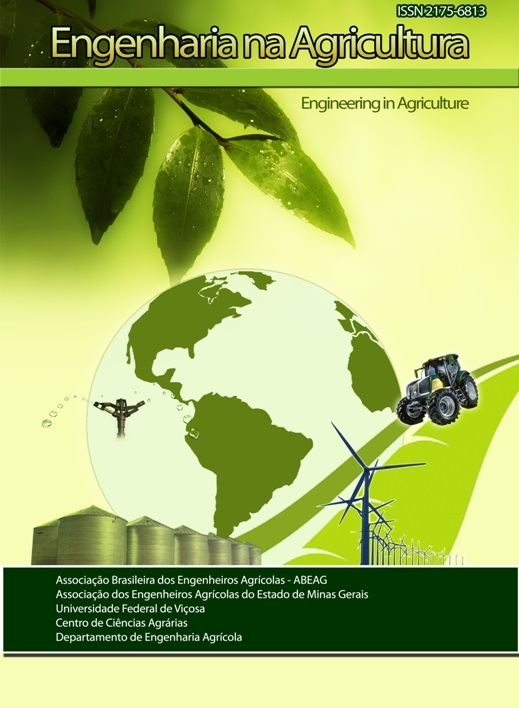Analysis of the use of construction waste as soil acidity corrective
DOI:
https://doi.org/10.13083/reveng.v29i1.8852Keywords:
construction waste, pollution of the soilAbstract
The construction and demolition waste (CDW) can be used as soil acidity corrective, which allow its final destination as an input of agricultural and environmental interest, beyond pollution control. This alternative of final destination makes possible the reduction on the amount of solid waste disposed in landfills, which will reduce the environmental impact and increase the useful life of the landfills. Therefore, the objective of this study was to evaluate the use of the construction waste to correct the pH of an acidic soil, typical of the southeastern region of Brazil. The CDWs used were collected in static buckets positioned next to building sites in Belo Horizonte, MG; sifted at less than 0.297 mm diameter and incorporated into an oxisol (red yellow latosol) collected on an exposed slope at Federal University of Minas Gerais (UFMG). Then, an incubation curve (after 21 days of incorporation of the waste to the soil) was performed varying the dose of the construction waste to the soil, aiming to obtain a pH x dose curve. Using logarithmic regression, the equation pH = 0.5454 ln(Dose) + 6.9646 was defined as ideal to describe this relationship. Thus, for the agricultural use it will be necessary a dose of 1,71 t ha-1, while, for pollution control, it will be necessary a dose of 46,28 t ha-1.
Downloads
References
ASSOCIAÇÃO BRASILEIRA DE NORMAS TÉCNICAS - ABNT. ABNT/NBR 10.004 - Resíduos sólidos - Classificação. Rio de Janeiro: ABNT, 2004.
BRASIL. Lei n. 12.305, de 02 de agosto de 2010. Política nacional de resíduos sólidos. Brasília: 2010.
BRASIL. Plano Nacional de Resíduos Sólidos. Ministério do Meio Ambiente, Brasília 2011.
CFSEMG – COMISSÃO DE FERTILIDADE DO SOLO DO ESTADO DE MINAS GERAIS. Recomendações para o uso de corretivos e fertilizantes em Minas Gerais (5a. aproximação). Viçosa, MG: UFV, Impr. Univ., 1999.
MATOS, A.T. Manual de Análise de Resíduos Sólidos e Águas Residuárias. Viçosa: Ed. UFV, 2015.
MATOS, A.T; FONTES, M.P.F; COSTA, L.M; MARTINEZ, M. A. Mobility of heavy metals as related to soil chemical and mineralogical characteristics of Brazilian soils. [s.l.]: Environmental Pollution, v.111, n.3, p.429-435, 2000.
MATOS, A.T. Qualidade do Meio Físico Ambiental - Práticas de Laboratório. Viçosa: Ed. UFV, 2012.
MATOS, A.T.; COSTA, L.M.; FONTES, M.P.F. Retardation factors and the dispersion-diffusion coefficients of Zn, Cd, Cu, and Pb in soils from Viçosa-MG, Brazil. [s.l.]: Transactions Of The ASAE. American Society of Agricultural and Biological Engineers (ASABE), v.42, n.4, p.903-910, 1999.
MATOS, A.T. Tratamento e aproveitamento agrícola de resíduos sólidos. Viçosa: Ed. UFV, 2014.
RITCHEY, K.D.; SOUZA, K.M.G.; LOBATO, E.; CORREA, O. Calcium leaching to increase rooting depth in a Brazilian Savannah Oxisol. Agronomy Journal, v.72, p.40-44, 1980.
Downloads
Published
How to Cite
Issue
Section
License
Copyright (c) 2020 REVISTA ENGENHARIA NA AGRICULTURA - REVENG

This work is licensed under a Creative Commons Attribution-NonCommercial 4.0 International License.
Authors who publish with this journal agree to the following terms:
The author(s) authorize(s) the publication of the text in the journal;
The author(s) ensure(s) that the contribution is original and unpublished and that it is not in the process of evaluation by another journal;
The journal is not responsible for the views, ideas and concepts presented in articles, and these are the sole responsibility of the author(s);
The publishers reserve the right to make textual adjustments and adapt texts to meet with publication standards.
From submission, the author is fully conceding the paper's patrimonial rights to the publication, but retaining the owner of its moral rights (authorship and paper's identification) according to Creative Commons Attribution-Noncommercial.








 Licensed by
Licensed by 